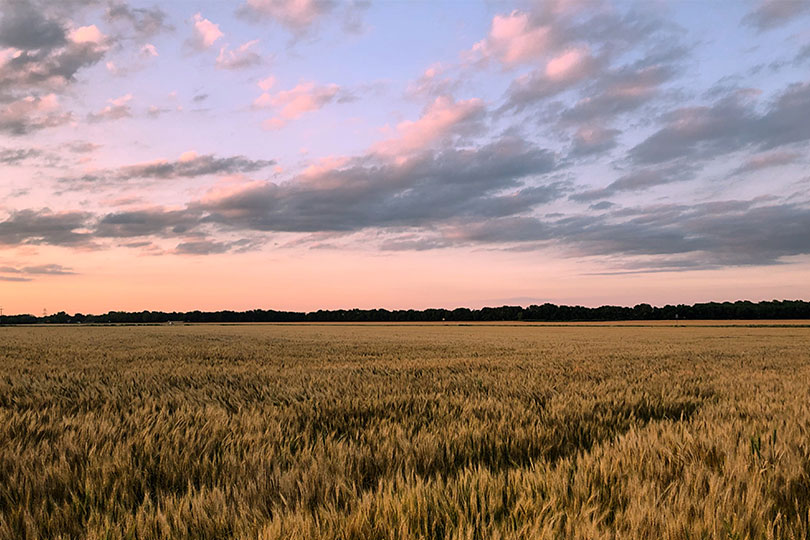The second round of trade aid through the Market Facilitation Program (MFP) is expected to begin this week.
“This second tranche of 2019 MFP payments, along with already provided disaster assistance, will give farmers, who have had a tough year due to unfair trade retaliation and natural disasters, much needed funds in time for Thanksgiving,” U.S. Secretary of Agriculture Sonny Perdue said.
Farmers of MFP-eligible commodities will now be eligible to receive 25 percent of the total payment expected, in addition to the 50 percent they have already received the from the program, according to USDA.
“The second tranche of MFP payments provides certainty for Texas farmers as they are incurring expenses going into the next growing season,” Brant Wilbourn, Texas Farm Bureau associate director of Commodity and Regulatory Activities, said.
The first round of MFP payments was issued in August.
The payments are part of a $14.5 billion aid package announced in May to be paid in three separate tranches.
The $14.5 billion in trade aid is in line with the estimated impacts of unjustified retaliatory tariffs on U.S. agricultural goods and other trade disruptions. These payments and additional programs will assist farmers and ranchers while President Trump works to address long-standing market access barriers, USDA said.
“We are hopeful for a resolution to the trade dispute with China, but we welcome the assistance as markets continue to suffer from lost trade due to retaliatory tariffs,” Wilbourn said.
Trade damages from such retaliation and market distortions have impacted many U.S. commodities.
Payments will be made to producers of alfalfa hay, barley, canola, corn, crambe, dried beans, dry peas, extra-long staple cotton, flaxseed, lentils, long grain and medium grain rice, millet, mustard seed, oats, peanuts, rapeseed, rye, safflower, sesame seed, small and large chickpeas, sorghum, soybeans, sunflower seed, temperate japonica rice, triticale, upland cotton and wheat. MFP assistance for these non-specialty crops is based on a single county payment rate multiplied by a farm’s total plantings of MFP-eligible crops in aggregate in 2019.
Those per-acre payments are not dependent on which of these crops are planted in 2019. County payment rates range from $15 to $150 per acre, depending on the impact of unjustified trade retaliation in that county.
Total payment-eligible plantings cannot exceed total 2018 plantings.
Dairy farmers that were in business as of June 1, 2019, will receive a per hundredweight payment on Dairy Margin Coverage production history.
Hog farmers will receive a payment based on the number of live hogs owned on a day selected by the farmer between April 1 and May 15, 2019.
MFP payments will also be made to producers of almonds, cranberries, cultivated ginseng, fresh grapes, fresh sweet cherries, hazelnuts, macadamia nuts, pecans, pistachios, and walnuts. Each specialty crop will receive a payment based on 2019 acres of fruit or nut bearing plants, or in the case of ginseng, based on harvested acres in 2019.
Acreage of non-specialty crops and cover crops had to be planted by Aug. 1, 2019, to be considered eligible for MFP payments.
Per-acre non-specialty crop county payment rates, specialty crop payment rates, and livestock payment rates are all currently available on farmers.gov/manage/mfp.
MFP payments are limited to a combined $250,000 for non-specialty crops per person or legal entity. MFP payments are also limited to a combined $250,000 for dairy and hog producers and a combined $250,000 for specialty crop producers. However, no applicant can receive more than $500,000.
Eligible applicants must also have an average adjusted gross income (AGI) for tax years 2015, 2016 and 2017 of less than $900,000 unless at least 75 percent of the person’s or legal entity’s AGI is derived from farming, ranching or forestry related activities.
Applicants must also comply with the provisions of the Highly Erodible Land and Wetland Conservation regulations.
Producers who filed a prevented planting claim and planted an FSA-certified cover crop, with the potential to be harvested qualify for a $15 per acre payment. Acres that were never planted in 2019 are not eligible for an MFP payment.
In addition to the $14.5 billion through MFP for 2019, USDA also continues to purchase food products, such as beef and lamb, through the Food Purchase and Distribution Program. Commodity Credit Corporation (CCC) Charter Act authority is being used to purchase up to $1.4 billion of surplus commodities in four phases that began Oct. 1.
The CCC also has used its Charter Act authority for $100 million to be issued through the Agricultural Trade Promotion Program to assist in developing new export markets on behalf of producers.
Click here for more information on the second round of trade aid.

